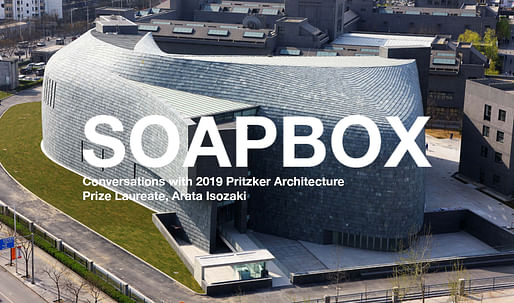
Arata Isozaki is dead. The famed designer of many of post-war Japan’s most significant public buildings and cultural commissions and winner of the 2019 Pritzker Prize passed away peacefully on Wednesday at his home in Okinawa, according to the New York Times.
Born in Ōita Prefecture in 1931, Isozaki studied at the University of Tokyo before working in the office of Kenzo Tange and then setting out to form his own practice in 1963. He was among a generation of Japanese star architects and designers, including contemporaries Issey Miyake, Shiro Kuramata, and Kisho Kurokawa, that indelibly changed the way the country was perceived and spoke to the world, authoring the designs for several key structures rendered in his ever-changing and aberrant interpretation of the metabolic style.
“The most important thing an artist can do is confront society with something it has never seen before, something in a sense improper,” Isozaki said rather famously when speaking about his motivations to practice architecture at the 2004 Triennale di Milano.

His belated Pritzker citation pointed to his “profound knowledge” of architectural theory and history and career-long embrace of the avant-garde, adding, “In his search for meaningful architecture, he created buildings of great quality that to this day defy categorizations, reflect his constant evolution, and are always fresh in their approach.”
Isozaki was a modernist away from the common mold, one who bridged gaps between cultures and designed buildings that had an everlasting international appeal. He leaves behind a partner, Misa, of many years, two sons, and over 100 completed works that deeply influenced the development of the profession on four continents.
Arata Isozaki was 91 years old.
3 Comments
Isozaki left us in Los Angeles a beautiful museum, an inward house in Venice Beach, and three small structures that could be used as rest and meditation stations in Joshua Tree. All these are very masterful on different scales and contexts. Right on, Arata Isozaki, rest in peace...
Legend with such an eclectic range over the course of his long career.
Even with his Pritzker win he remains an under-appreciated architect. The NY Times article announcing his passing brings up his response to the Zaha Hadid stadium in Tokyo, which I still have mixed feelings about, but he undeniably changed the architectural landscape for the better...
Speaking only for myself, when I was still a student and moved to Japan for the first time, I was invited to a conference of international avant-garde architects a few weeks after arriving. Knowing nothing about the event I went to hear the architects explain their work and was amazed when Ron Herron appeared. He was the only one I knew at the time, but older me is astounded that Ron was joined by Enric Miralles and Daniel Libeskind, among others. My picture of Japan was set at that moment. It was a place where the best in the world came to do amazing things and all I had to do was look around.
The thing is, they were all there thanks to an invitation from Arata Isozaki. He was a kind of king maker and organizer of architectural adventures all over Japan at the time. Much of the work was by young architects who were destined for bigger things but had not built much yet (he did the same thing in Fukuoka with Steven Holl, Rem Koolhaas and Christian de Portzamparc). He had the eye to see them and the cultural clout to give them a chance to build.
Like Phillip Johnson in the West he made the careers of others as much as his own. Which is an astonishing thing. And a pretty powerful legacy, beyond his own works.
Block this user
Are you sure you want to block this user and hide all related comments throughout the site?
Archinect
This is your first comment on Archinect. Your comment will be visible once approved.